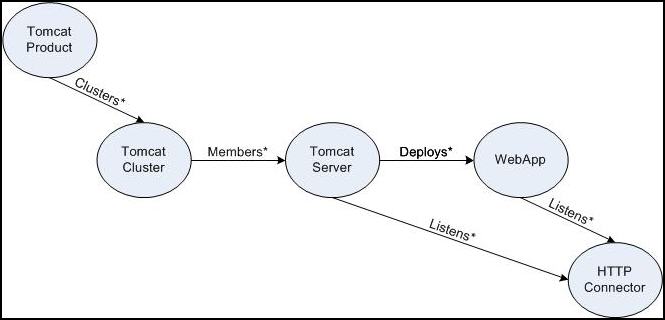Example Analysis of Managed Objects for Tomcat
Analyzing a system of managed objects produces artifacts to guide you as you develop an agent. As an example, analysis of Tomcat might produce this table and this relationship diagram.
| Entity | Concept Type | Relationships | Configuration | States | Operations |
|---|---|---|---|---|---|
| Tomcat Product | Top Level Object | Manages* > Tomcat Cluster |
Add Cluster Remove Cluster |
||
| Tomcat Cluster | Group | Members* > Tomcat Server |
Add Server Remove Server |
||
| Tomcat Server | Process |
Deploys* > WebApp Listens* > HTTP Connector |
Installation Folder |
Running Stopped |
Start Stop Deploy App Add Connector Remove Connector |
| WebApp | Application | Listens* > HTTP Connector | Context Path |
Running Stopped |
Start Stop |
| HTTP Connector | Access Point |
Port Number SSL Parameters |
Enabled Disabled |
Enable Disable |
The third step might produce a diagram such as the following:
This example does not correspond exactly to the sample Tomcat agent. To illustrate a wider range of concept types, this example explicitly models the cluster and HTTP connector as managed objects. The sample code implements a simpler model, which omits these entities.

